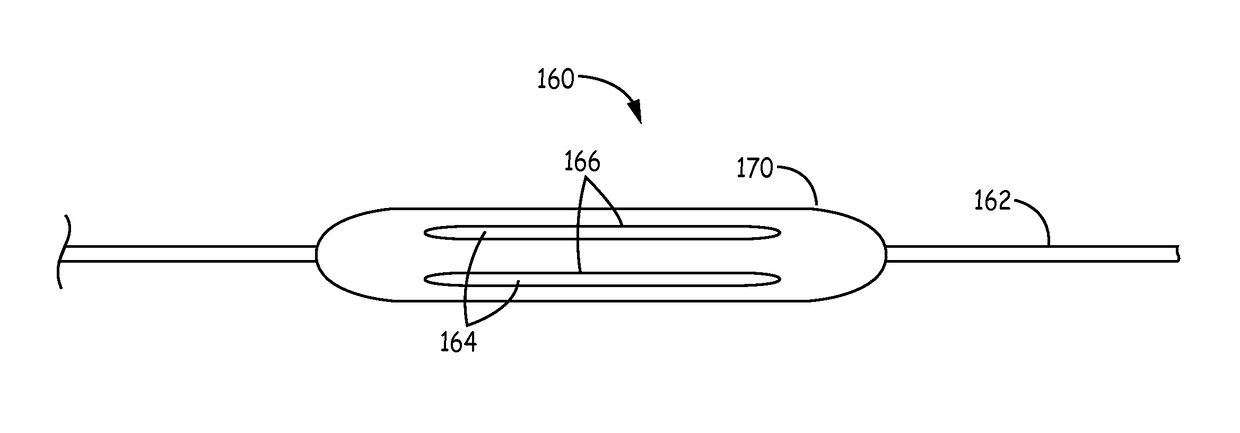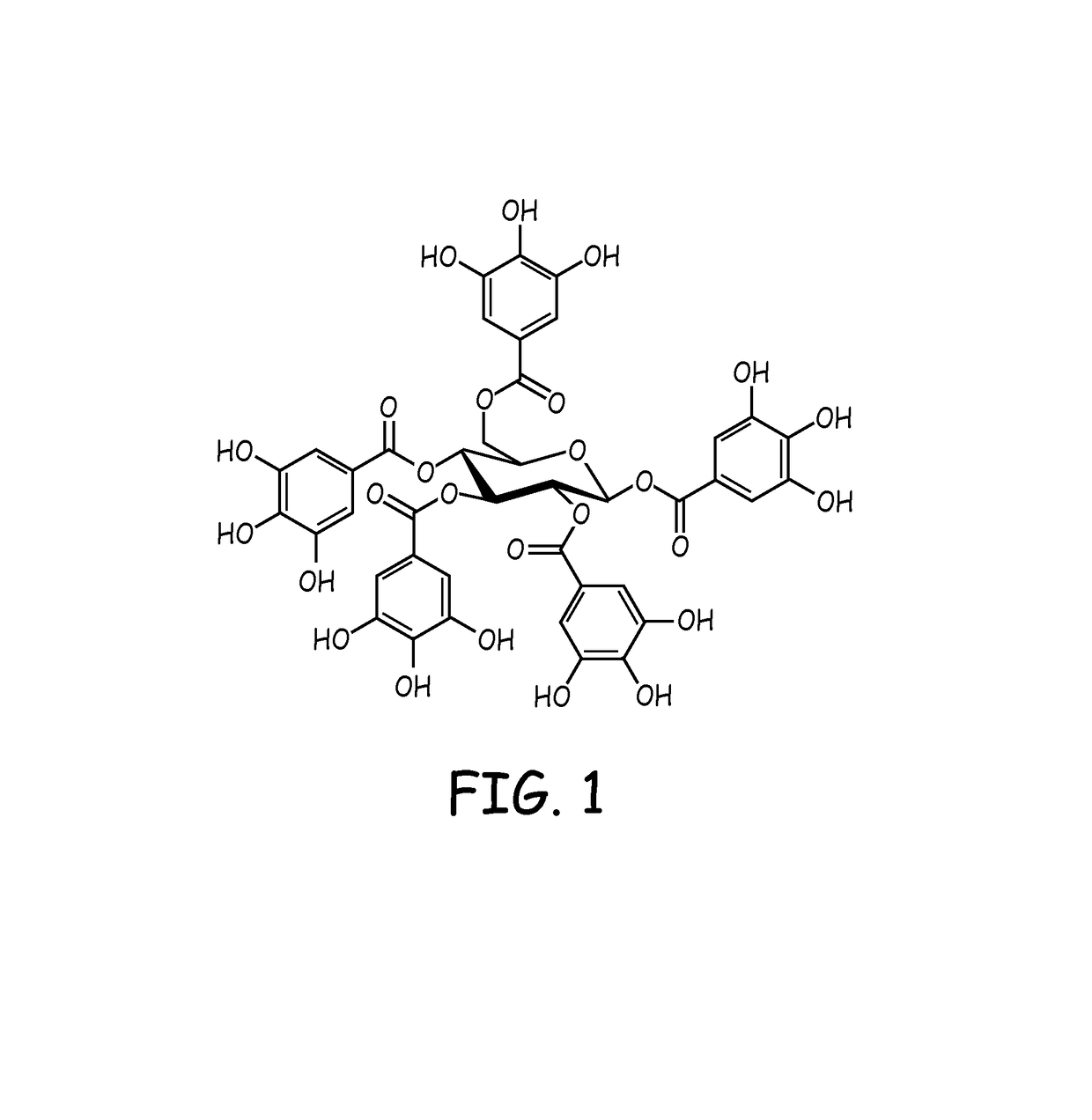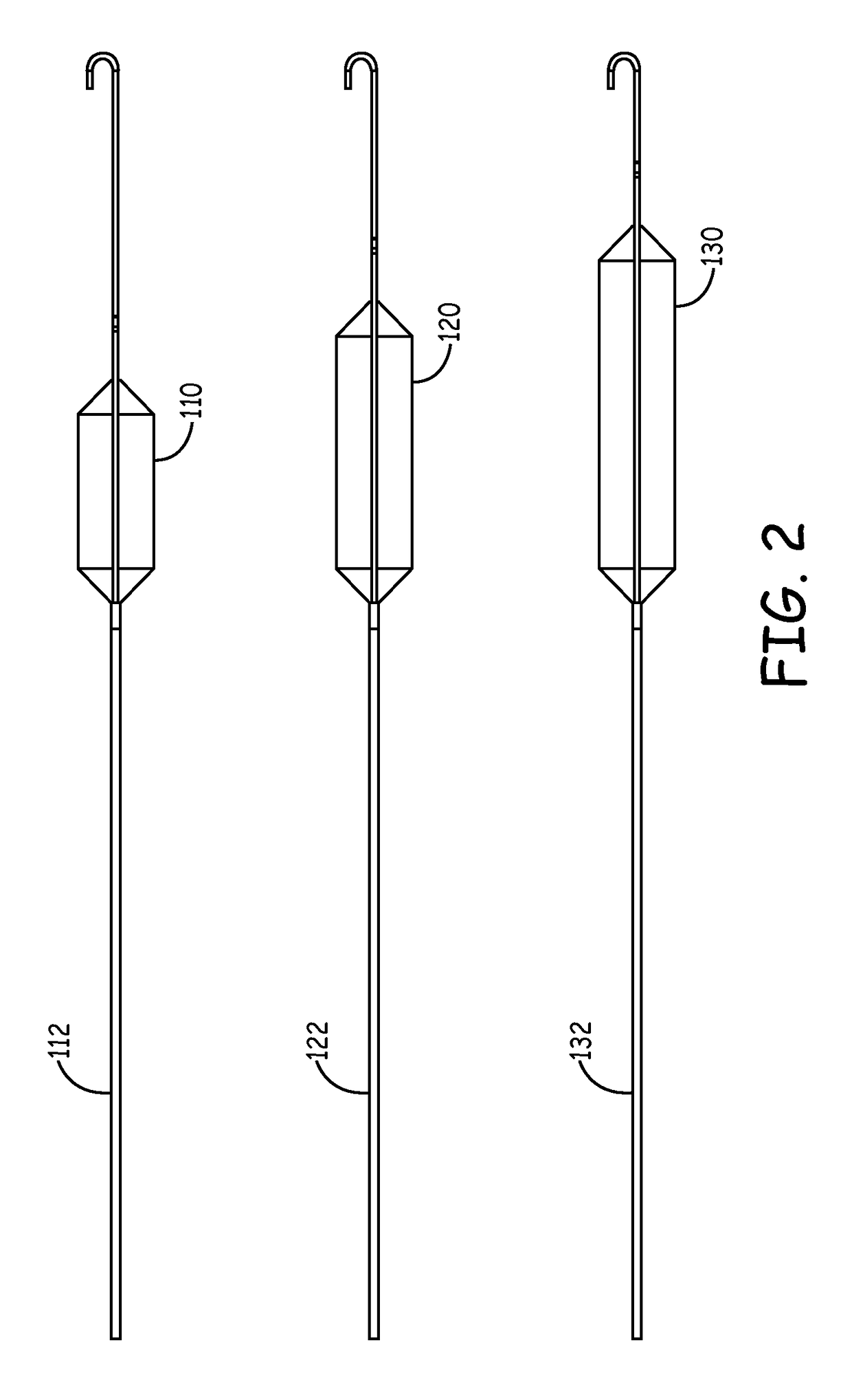Coated balloons for blood vessel stabilization
a blood vessel and balloon technology, applied in the direction of catheters, packaging goods, packaging foodstuffs, etc., can solve problems such as fatal ruptures
- Summary
- Abstract
- Description
- Claims
- Application Information
AI Technical Summary
Benefits of technology
Problems solved by technology
Method used
Image
Examples
example 1
Modification of the Surface of the Balloon
[0097]In general, the balloons used for testing were obtained from commercial sources such as Vention / Advanced Polymer that has a diameter of 20-35 mm, a length of 50 mm, and a material of very low durometer urethane. The balloon assemblies with the delivery catheter etc. were built in house or through an outside original equipment manufacturer such as Cartika. In general, during the treatment process, the balloon was inflated to its nominal dimension. The surface of the balloon was treated with an aliphatic diisocyanate such as hexamethylene diisocyanate in a volatile solvent so one of the isocyanate groups bind to the urethane linkages on the balloon surface, leaving the other isocyanate group available for further reaction. The diisocyanate treated balloon was then reacted with a solution of polyvinyl alcohol (PVA) in water and isopropyl alcohol (IPA) mixture to bind the PVA to the available isocyanate group on the surface of the balloon....
example 2
Formation of the Coated Balloon
[0098]In general, before the coating process, the balloon was inflated to its nominal dimension. In some embodiments, a balloon may be coated directly with a coating solution such as a PGG / PVA solution without prior treatment or formation of an undercoat layer. Alternatively, the PVA modified balloon from example 1 was coated with the PGG / PVA solution. The PGG / PVA solution in general has a PGG / PVA ratio of 50 / 50 in water and isopropyl alcohol (IPA) mixture. For example, the coating solution can comprise 2-4 wt % PVA, 1-3 wt % PGG, 30-40 wt % IPA, with remainder comprise DI water.
[0099]The inflated balloon was then submersed in the PGG / PVA coating solution for 10 seconds after which time the balloon was withdrawn from the coating solution at a constant rate. The PGG coated balloon was then dried under vacuum at 50° C. overnight to form the coated balloon. For balloons that were pretreated as outlined in Example 1, the coated balloon was also tested to d...
example 3
Evaluate Coated Balloon in an Aortic Model
[0100]Testing of the coated balloon device from example 2 that does not contain the undercoat layer was performed with the assistance of a model of abdominal aorta aneurysm, which is a good mimic of the human anatomy. These models were made in house and by Elastrat, providing a fairly realistic feel for the deployment of endovascular devices in the actual vasculature. The following steps were performed with the coated balloon device of Example 2: (1). Insert the device into the model femoral artery in the model. (2). Guide the coated balloon of the device to the aneurysm. (3). Deploy the coated balloon to make good contact with the wall of the aneurysm. (4). Keep the deployed coated balloon at aneurysm for a sufficient period of time to allow delivery of the therapeutic compositions such as PGG. (5). Transform the deployed coated balloon to a low profile configuration and remove the device from the model femoral artery. FIG. 8 shows the coat...
PUM
| Property | Measurement | Unit |
|---|---|---|
| thickness | aaaaa | aaaaa |
| thickness | aaaaa | aaaaa |
| length | aaaaa | aaaaa |
Abstract
Description
Claims
Application Information
 Login to View More
Login to View More - R&D
- Intellectual Property
- Life Sciences
- Materials
- Tech Scout
- Unparalleled Data Quality
- Higher Quality Content
- 60% Fewer Hallucinations
Browse by: Latest US Patents, China's latest patents, Technical Efficacy Thesaurus, Application Domain, Technology Topic, Popular Technical Reports.
© 2025 PatSnap. All rights reserved.Legal|Privacy policy|Modern Slavery Act Transparency Statement|Sitemap|About US| Contact US: help@patsnap.com



